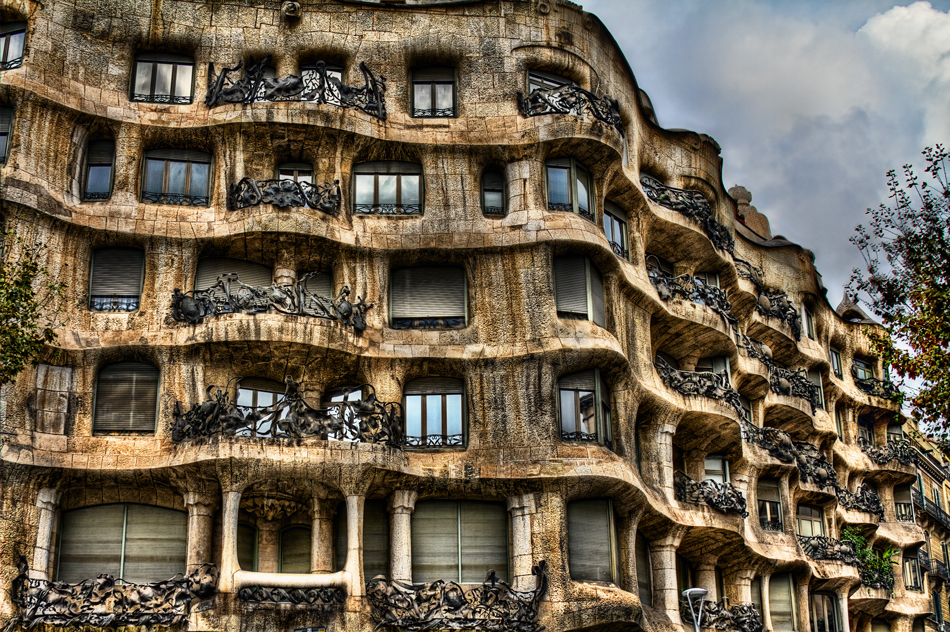 |
| Gaudi Pop-Ups |
The reason may be timing. Gaudí’s high-cultural reputation and mass appeal are fairly recent phenomena, as is the notion that serious art befits 3-D treatment; a convergence of these trends may have produced this book. Born in 1852 into a family of coppersmiths, Gaudí developed his singular style in prosperous, fin de siècle Barcelona, where modernism held sway and a patron class had sprung up to provide commissions. When he died in 1926, after being struck by a trolley while walking to Mass, a bereft city turned out to mourn. Over the next few decades, Gaudí’s reputation waned. Many critics and fellow artists saw his work as overwrought and idiosyncratic, narrowly preoccupied with Catalan identity and pious Catholicism. In “Homage to Catalonia,” a firsthand account of soldiering in the Spanish Civil War, George Orwell describes Gaudí’s immense, still-unfinished masterwork, La Sagrada Família (the Expiatory Temple of the Holy Family), as “one of the most hideous buildings in the world. . . . I think the Anarchists showed bad taste in not blowing it up when they had the chance.”
Gaudí’s rehabilitation from modernist dead end began in the 1960s and accelerated with the end of the Franco regime. As the biographical sketch in “Gaudí Pop-Ups” notes, his works have been named a Unesco World Heritage site — a sure sign of global cultural approval. However, the book omits the back story of Gaudí’s fall and rise, relying on well-chosen photographs and McCarthy’s pop-ups to convey the visual impact and sheer wondrous appeal of his most loved Barcelona designs. The accompanying text is concise and unobtrusive.
Open the pages depicting Park Güell, the stunning garden Gaudí created for an unrealized suburban development, and observe the delicate, palm-leaf ironwork on the entrance gates; then get a bird’s-eye view (impossible to achieve in person) of the park’s beloved salamander fountain, encrusted with shards of bright tile, or trencadís. The paper-engineered version of the Casa Batlló, a plain mansion in Barcelona’s Eixample district that Gaudí remodeled into a glittering piece of anthropomorphism, is similarly satisfying: from the sparkling facade, McCarthy juts out the famous skull balconies that draw gawkers on the street below.
To do justice to Casa Milà, the sand-colored mountain of a structure that was Gaudí’s last secular project, McCarthy provides a pop-up of the apartment building’s “most spectacular feature,” the rooftop terrace with its chimneys camouflaged as sculptures. Consistent with Gaudí’s lifelong blending of religion and history, these organic shapes suggest “guardian warriors and veiled women . . . citadels and mosques.”
 |
| Casa Milla |
Last, and best, are the pop-ups of La Sagrada Família, Gaudí’s obsessive focus for the last 14 years of his life. Fittingly, the church’s signature spires unfold into the tallest paper structure in the book, which closes with McCarthy’s ingenious rendition of the light-filled basilica, its ranks of columns seeming to advance toward the reader. Gaudí meant this space to hold 13,000 worshipers, and when you enter the real church, all seem to be present. Hence, a great pleasure of “Gaudí Pop-Ups” is having the artist to yourself: open the book, and there are no people.
 |
| La Sagrada Familia |
No comments:
Post a Comment